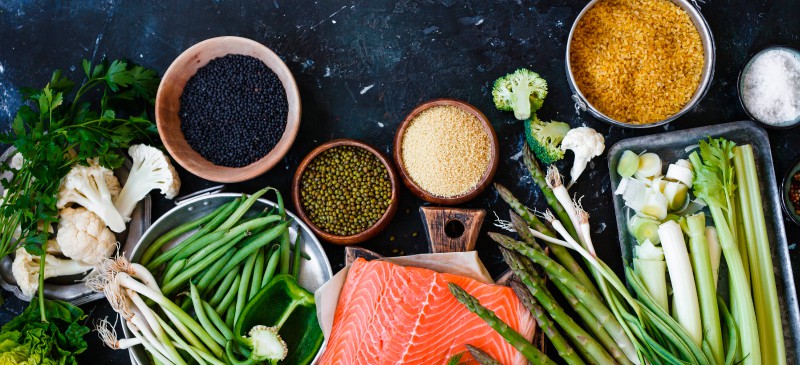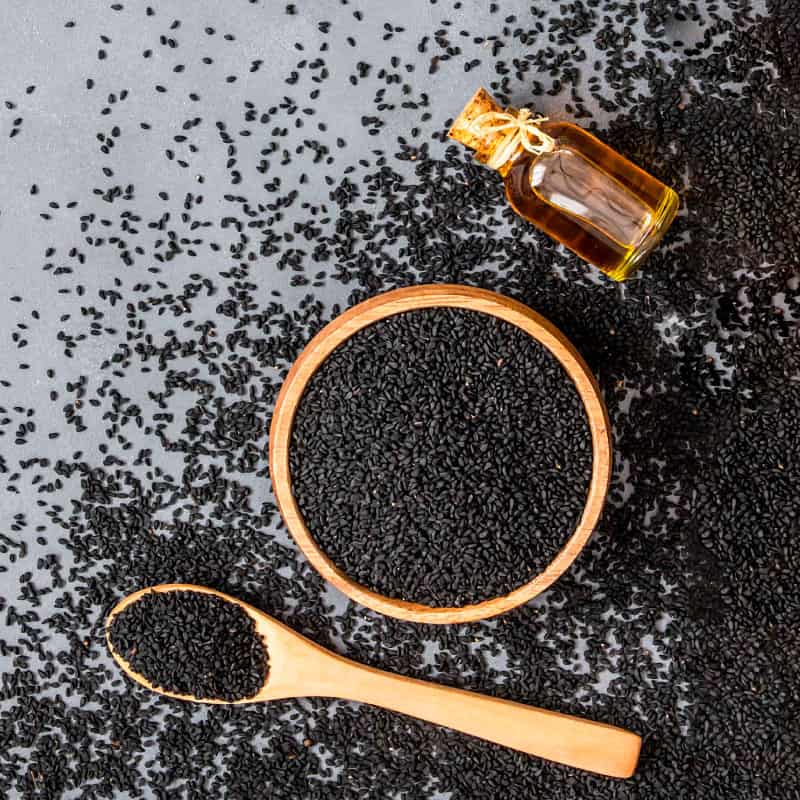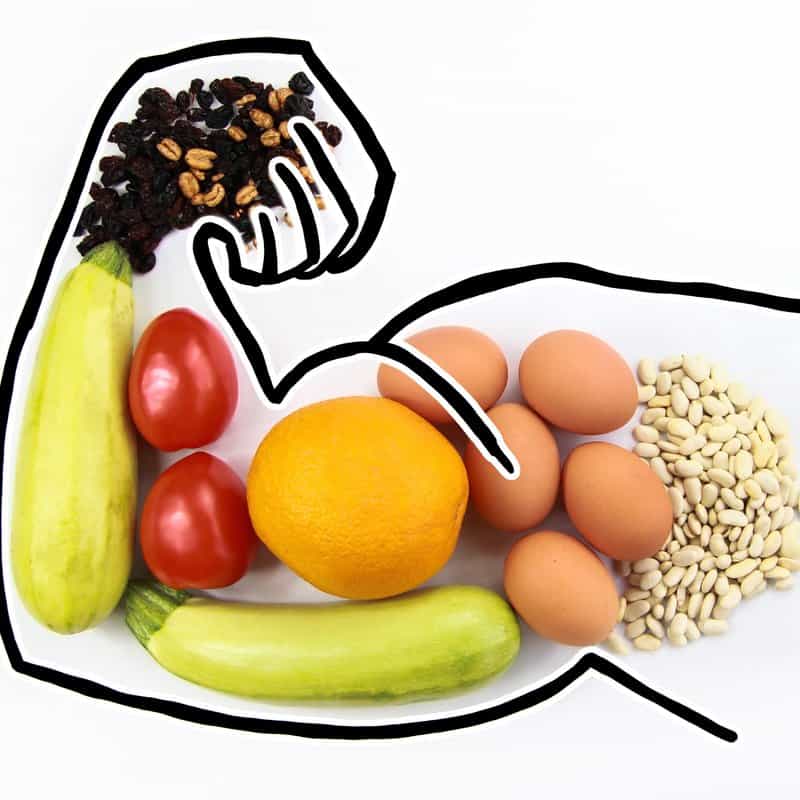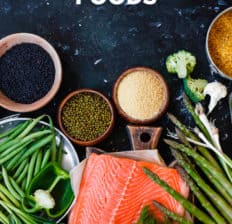This Dr. Axe content is medically reviewed or fact checked to ensure factually accurate information.
With strict editorial sourcing guidelines, we only link to academic research institutions, reputable media sites and, when research is available, medically peer-reviewed studies. Note that the numbers in parentheses (1, 2, etc.) are clickable links to these studies.
The information in our articles is NOT intended to replace a one-on-one relationship with a qualified health care professional and is not intended as medical advice.
This article is based on scientific evidence, written by experts and fact checked by our trained editorial staff. Note that the numbers in parentheses (1, 2, etc.) are clickable links to medically peer-reviewed studies.
Our team includes licensed nutritionists and dietitians, certified health education specialists, as well as certified strength and conditioning specialists, personal trainers and corrective exercise specialists. Our team aims to be not only thorough with its research, but also objective and unbiased.
The information in our articles is NOT intended to replace a one-on-one relationship with a qualified health care professional and is not intended as medical advice.
Top 20 Nutrient-Dense Foods and Their Benefits
October 25, 2024

Nutrient-dense foods are those that provide a high amount of vitamins, minerals, antioxidants and other beneficial compounds relative to their calorie content. These superfoods are packed with nutrients essential for health, without containing too many calories, unhealthy fats, added sugars or refined carbohydrates.
Incorporating nutrient-dense foods into your diet is one of the most effective ways to meet your body’s nutritional needs and support overall well-being and healthspan. For instance, eating these foods regularly supports energy levels, boosts immunity and helps the body fend off chronic conditions.
Below are 20 of the most nutrient-dense foods you can add to your meals today, along with their benefits and how exactly to add them to your diet to increase nutrient density.
1. Avocado
Rich in healthy monounsaturated fats, avocados are a great source of potassium, folate and vitamin E. They also contain fiber, which helps with digestion and can support heart health.
Best ways to eat: Slice in salads, spread on toast or blend into smoothies for a creamy texture.
2. Berries
Berries like strawberries, raspberries and blackberries are antioxidant powerhouses that combat free radicals, reduce inflammation and support skin health. They’re also low in calories but high in fiber, vitamin C and other antioxidants.
Best ways to eat: Add to oatmeal, yogurt or enjoy as a snack.
3. Black beans
Packed with plant-based protein and fiber, black beans are also rich in folate, magnesium and iron. They help support heart health, blood sugar regulation and digestive health.
Best ways to eat: Include in soups, salads and wraps.
4. Blueberries
Blueberries are highly regarded for their high levels of antioxidants, particularly anthocyanins, which support brain health and may help lower blood pressure. They also provide a host of other vital nutrients, such as vitamin K, manganese, vitamin C and copper, and blueberry supplementation has been found to boost skin health.
Best ways to eat: Sprinkle on cereals, add to smoothies or eat fresh.
5. Bone broth
Bone broth — particularly beef bone broth and chicken bone broth — is full of collagen, minerals and amino acids, which support joint health, skin elasticity and digestion. It’s a hydrating option that also contains small amounts of protein.
Best ways to eat: Sip it on its own, or use as a base for soups and stews.
6. Broccoli
Broccoli is a cruciferous vegetable packed with vitamins C and K and folate, along with fiber and antioxidants like sulforaphane, which may help reduce the risk of certain cancers.
Best ways to eat: Steam, roast or add to stir-fries.
7. Eggs
Eggs are an excellent source of high-quality protein and contain important nutrients like choline (which supports cognitive health) and vitamin D.
Best ways to eat: Boil, scramble or poach for a nutrient-dense meal.
8. Garlic
Garlic contains allicin, a compound known for its immune-boosting and heart-protective properties. It may also help reduce blood pressure and cholesterol.
Best ways to eat: Add to sauces, marinades or roast for a mellow flavor.
9. Kale
Kale is one of the most nutrient-dense leafy greens, rich in vitamins A, C and K, along with fiber, calcium and powerful antioxidants.
Best ways to eat: Blend in smoothies, add to salads or bake as chips.
10. Kefir
Kefir is a probiotic-rich fermented dairy product that promotes a healthy gut microbiome. It’s also high in calcium, protein and B vitamins.
Best ways to eat: Drink plain, or mix into smoothies and overnight oats.
11. Lentils
Lentils are a great source of plant-based protein, fiber, iron and folate, making them ideal for supporting heart health, digestive health and muscle recovery.
Best ways to eat: Cook in soups, stews or use as a base for salads.
12. Liver
Liver —particularly beef liver — is incredibly nutrient-dense, with high amounts of iron, vitamin A and B12, all of which support energy levels, immune function and skin health.
Best ways to eat: Sauté or mix into pâtés for a nutrient-packed boost.
13. Mackerel
Mackerel is an oily fish rich in omega-3 fatty acids, which support cardiovascular health, enhance brain function and lower inflammation. It’s also high in vitamin D and B12.
Best ways to eat: Grill, bake or enjoy canned mackerel.
14. Mushrooms
Mushrooms are low-calorie but nutrient-dense, containing antioxidants, fiber and B vitamins. Certain varieties, like shiitake and maitake, offer immune-boosting properties.
Best ways to eat: Sauté, roast, or add to soups and salads.
15. Pumpkin seeds
Pumpkin seeds are a fantastic source of magnesium, zinc and healthy fats. They’re known to promote heart health, prostate health and even improve sleep quality.
Best ways to eat: Enjoy as a snack, sprinkle on salads or add to smoothies.
16. Salmon
Salmon is another fatty fish loaded with omega-3s, protein and B vitamins. It’s well-known for protecting heart health, promoting cognitive function and decreasing inflammation.
Best ways to eat: Grill, bake, or add to salads and pasta dishes.
17. Sardines
Sardines are full of omega-3 fatty acids, vitamin D, calcium and protein. They’re great for bone health, heart health and muscle function.
Best ways to eat: Enjoy on toast, add to pasta or eat as a snack.
18. Seaweeds
Seaweeds, like nori, spirulina and kelp, are nutrient-dense sources of iodine, calcium and various trace minerals. They support thyroid function, metabolism and bone strength.
Best ways to eat: Add to salads, soups or enjoy as a snack.
19. Spinach
Spinach is rich in iron; vitamins A, C and K; as well as magnesium. Its antioxidant profile supports eye health, blood pressure regulation and skin health.
Best ways to eat: Use in salads, smoothies or sauté as a side dish.
20. Sweet potatoes
Sweet potatoes are loaded with beta-carotene (which converts to vitamin A), fiber and potassium. They’re excellent for vision health, immune system function and gut health.
Best ways to eat: Bake, roast or mash as a nutritious side.
Other nutrient-dense foods include:
- Leafy greens like bok choy, collard greens, watercress, dandelion greens and arugula
- Broccoli rabe
- Cauliflower
- Other cruciferous vegetables, like cabbage and Brussels sprouts
- Exotic berries like acai, goji and camu camu
- Bell peppers
- Carrots
- Parsnips
- Parsley, cilantro, basil and other herbs
- Asparagus
- Beets
- Grass-fed beef
- Gren beans
- Pumpkin
- Artichokes
- tomatoes
- Seeds like pumpkin, sunflower, chia and flax
- Raw cheese
- Potatoes
- Dark chocolate
- Wild rice
- Yogurt
- Cacao
- Bitter melon
- Wheatgrass
- Cinnamon
- Raw milk
- Almonds
- Coconut
- Green tea
- Turmeric
- Ginger
- Grapefruit
- Swiss chard
- Mustard greens
Frequently asked questions
Which foods are most nutrient-dense?
Nutrient-dense foods are those that pack a high amount of essential nutrients, such as vitamins, minerals, healthy fats, protein and fiber, in relatively few calories. Some of the most nutrient-dense foods include:
- Leafy greens like kale and spinach, rich in vitamins A, C and K; calcium; iron; and antioxidants.
- Salmon and other fatty fish, which are high in omega-3 fatty acids, protein and B vitamins.
- Eggs, which provide protein, choline and essential fats.
- Liver and other organ meats, which are loaded with iron, B vitamins and vitamin A.
- Blueberries and other berries, known for their high antioxidant and fiber content.
What is the No. 1 healthiest food in the world?
There isn’t an official “No. 1” healthiest food, as health needs vary by individual. However, kale and salmon are often regarded as two of the healthiest foods due to their exceptional nutrient profiles.
Kale provides a wealth of vitamins, minerals and antioxidants, while salmon delivers high-quality protein and omega-3 fatty acids, which benefit heart and brain health.
What are some of the most nutritious foods?
Some of the most nutritious, nutrient-dense foods include:
- Avocado: High in healthy fats, potassium and fiber.
- Broccoli: Contains vitamins C and K and fiber, along with compounds that may help reduce cancer risk.
- Eggs: An excellent source of high-quality protein and many vitamins, including B12 and choline.
- Lentils: High in plant-based protein, fiber, iron and folate.
- Sardines: Rich in omega-3s, calcium and vitamin D.
These foods provide a wide range of nutrients beneficial for various body functions.
What is one food you can survive on?
If there were one food that could come close to sustaining a person alone, potatoes are often considered one of the best options. Potatoes contain carbohydrates for energy, along with essential vitamins (like vitamin C and several B vitamins), fiber and even protein.
However, they lack some critical nutrients, like vitamins A and B12, so while a potato-heavy diet could provide sustenance for a time, it would not be a long-term solution for complete nutrition.
Another popular contender is eggs, as they contain protein, fats, and many vitamins and minerals. However, even with a nutrient-dense food like eggs or potatoes, it’s challenging to get all essential nutrients from just one source in the long term.
Long story short, there is no one food that you can live on for a long time and still get the proper nutrition you need, even if one of them is among the top nutrient-dense foods.
Conclusion
- Incorporating these nutrient-dense foods into your diet can have a significant impact on your overall health, providing essential nutrients that support everything from brain health to immunity.
- Whether you’re a fan of leafy greens, lean proteins or antioxidant-rich berries, there’s something in this list to suit every taste and meal.
- For a well-rounded diet, aim to add these nutrient-dense foods to your weekly shopping list, and enjoy their many health benefits regularly.







